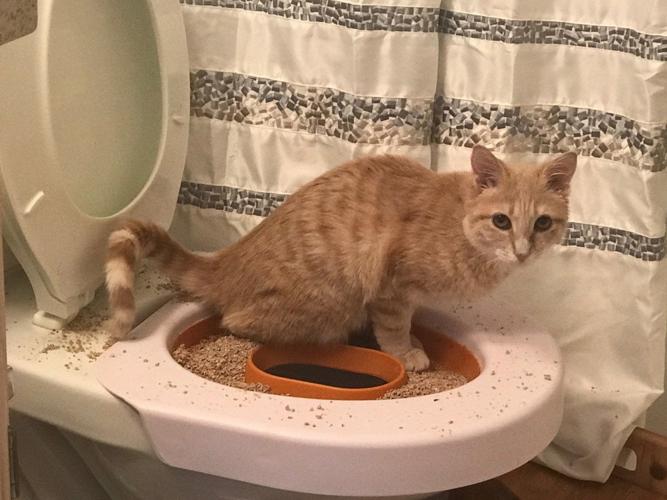They are making several great pointers on How to Dispose of Cat Poop and Litter Without Plastic Bags in general in this content down the page.

Intro
As feline owners, it's essential to be mindful of just how we deal with our feline buddies' waste. While it may appear practical to flush cat poop down the commode, this method can have detrimental effects for both the atmosphere and human health.
Alternatives to Flushing
The good news is, there are more secure and much more liable methods to deal with pet cat poop. Consider the complying with alternatives:
1. Scoop and Dispose in Trash
The most usual method of taking care of cat poop is to scoop it into a naturally degradable bag and throw it in the trash. Make sure to use a devoted litter scoop and dispose of the waste quickly.
2. Use Biodegradable Litter
Opt for eco-friendly pet cat clutter made from materials such as corn or wheat. These litters are environmentally friendly and can be securely dealt with in the trash.
3. Hide in the Yard
If you have a yard, take into consideration burying feline waste in an assigned area away from vegetable yards and water sources. Be sure to dig deep sufficient to stop contamination of groundwater.
4. Mount a Pet Waste Disposal System
Buy an animal garbage disposal system especially developed for cat waste. These systems make use of enzymes to break down the waste, minimizing odor and ecological effect.
Health Risks
Along with ecological worries, flushing feline waste can also present health risks to human beings. Cat feces might contain Toxoplasma gondii, a parasite that can create toxoplasmosis-- a possibly severe health problem, specifically for pregnant ladies and individuals with weakened immune systems.
Ecological Impact
Purging pet cat poop presents unsafe pathogens and parasites into the supply of water, presenting a considerable danger to water ecological communities. These impurities can adversely impact marine life and compromise water quality.
Conclusion
Responsible pet dog ownership prolongs past supplying food and sanctuary-- it likewise entails proper waste administration. By avoiding purging cat poop down the bathroom and choosing alternate disposal methods, we can lessen our environmental impact and secure human wellness.
Why Can’t I Flush Cat Poop?
It Spreads a Parasite
Cats are frequently infected with a parasite called toxoplasma gondii. The parasite causes an infection called toxoplasmosis. It is usually harmless to cats. The parasite only uses cat poop as a host for its eggs. Otherwise, the cat’s immune system usually keeps the infection at low enough levels to maintain its own health. But it does not stop the develop of eggs. These eggs are tiny and surprisingly tough. They may survive for a year before they begin to grow. But that’s the problem.
Our wastewater system is not designed to deal with toxoplasmosis eggs. Instead, most eggs will flush from your toilet into sewers and wastewater management plants. After the sewage is treated for many other harmful things in it, it is typically released into local rivers, lakes, or oceans. Here, the toxoplasmosis eggs can find new hosts, including starfish, crabs, otters, and many other wildlife. For many, this is a significant risk to their health. Toxoplasmosis can also end up infecting water sources that are important for agriculture, which means our deer, pigs, and sheep can get infected too.
Is There Risk to Humans?
There can be a risk to human life from flushing cat poop down the toilet. If you do so, the parasites from your cat’s poop can end up in shellfish, game animals, or livestock. If this meat is then served raw or undercooked, the people who eat it can get sick.
In fact, according to the CDC, 40 million people in the United States are infected with toxoplasma gondii. They get it from exposure to infected seafood, or from some kind of cat poop contamination, like drinking from a stream that is contaminated or touching anything that has come into contact with cat poop. That includes just cleaning a cat litter box.
Most people who get infected with these parasites will not develop any symptoms. However, for pregnant women or for those with compromised immune systems, the parasite can cause severe health problems.
How to Handle Cat Poop
The best way to handle cat poop is actually to clean the box more often. The eggs that the parasite sheds will not become active until one to five days after the cat poops. That means that if you clean daily, you’re much less likely to come into direct contact with infectious eggs.
That said, always dispose of cat poop in the garbage and not down the toilet. Wash your hands before and after you clean the litter box, and bring the bag of poop right outside to your garbage bins.
https://trenchlesssolutionsusa.com/why-cant-i-flush-cat-poop/

Do you like reading about Can You Flush Cat Poo or Litter Down the Toilet?? Make a remark below. We'd be glad to know your opinion about this page. We are looking forward that you come back again before long. In case you appreciated our post plz remember to pass it around. Thank-you for your time invested reading it.
Set Up An Appointment